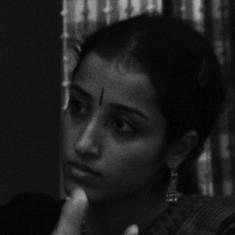Archival records show that a merchant from Chennai arrived in Salem, Massachusetts in 1790, just 14 years after the country’s declaration of independence. He came with a “desire to expand trade between New England, Britain" and India, according to the diary of the captain on whose ship he travelled.
Over two centuries later, the first major exhibition to chronicle the history of Indians in the US will open on February 27 at the National Museum of Natural History, part of the Smithsonian Institution in Washington DC. At 5,000 square feet, ‘Beyond Bollywood’ is larger than the average show presented by the museum.
“While the exhibition takes Bollywood as one point of departure for the stories we’re telling, we paired it with the word 'Beyond' to show that we’re a lot more than you think we are, to show the fingerprints and footprints that Indian Americans have left and are leaving on this country,” said Dr Masum Momaya, curator of Smithsonian's Asian Pacific American Center.
The exhibition will remain at the Natural History Museum for a year, and then travel to other locations in the US.
There are at present over three million Americans of Indian origin in the country, a million of whom have voting rights.
“’Beyond Bollywood’ marks a significant step towards not only documenting the history of Indians in America, but also imprinting this history onto the collective conscience of this country,” said Momaya. “I hope that visitors come away understanding that Indians have been in the US for a long time and that our fingerprints and footprints here are deep and nuanced.”
Here are some photos that the exhibition will feature.

Dalip Singh Saund, the first Asian Congressman, with Senators John F. Kennedy and Lyndon B. Johnson, 1958.

DJ, producer and activist Rekha Malhotra, popularly known as DJ Rekha, is credited with popularising bhangra in the US.

The Sharma family in San Francisco, 1983.

An Indian immigrant worker harvests beets in Hamilton City, California, for the Sacramento Valley Sugar Company, c. 1907-1915.










